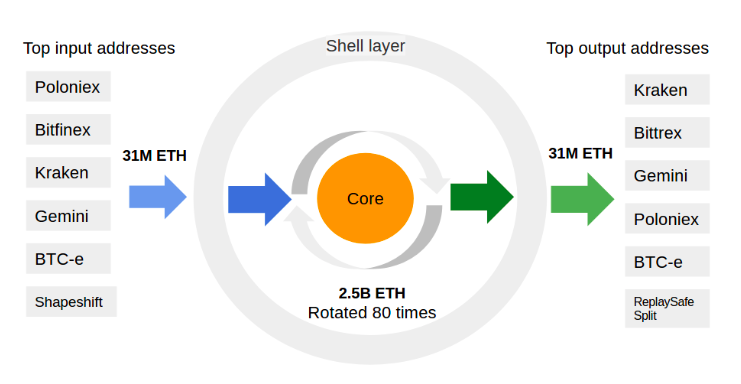A group of extremely savvy analysts started evaluating how much and where ETH transactions were being processed. What they found was a bit of a surprise.
According to the analysis, over 65 percent of all ETH transactions are generated using temporary addresses. In other words, funds come into the address and leave the address again, usually within an hour, and the addresses are never used again.
The finding, on the cyberFund blog, indicates that an ‘Ethereum mixer’ is moving funds into temporary addresses, mixing them around from address to address, and then outputting them into more fixed addresses on different exchanges. The graphic below indicates the process.

The issue with these transactions is that they represent a massive part of all Ethereum transactions taking place, indicating that funds are being moved rapidly, and for some purpose that is not evidently clear. The analysis that at least one of the following possible options must be true of the mixer.
Avoiding controls
1. The protection offered to clients by crypto-exchanges: all clients’ funds are mixed so that the funds’ sources cannot be tracked and those holding clean money cannot be unjustifiably accused of any illegal activity
2. A mechanism set in place to protect US residents who wish to avoid control from US regulatory bodies
3. A mechanism used by a large private exchange to preserve the privacy of its clients; this exchange might be operating with fiat money
4. A mechanism used to securely transfer crypto-assets between crypto-exchanges
5. Any kind of Ethereum-laundering scheme
Which of these options is actually the purpose remains to be seen. However, if such a high volume of transactions is being carried out by a single mechanism, it calls into question the market growth of Ethereum and its actual use.
